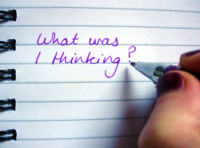Learner Centred Learning
Fostering active, interactive and deep learning strategies for adult learners.
1. Take a look at the article
Reflective Practice: What is it really? - this covers several aspects about reflective practice including definitions of reflection, professional learning and reflective practice, and critical reflection as well as the concept of reflective writing. Also,
Models and frameworks for reflective practice are listed for health and education.
2. Check out the Nine dimensions for reflective practice to guide your professional practice.
3. You may also find the reflective practice study guide by Heather Day helpful.
Key points
*Reflection is a defining characteristic of reflective practice and involves deep thinking and interpretation about your experiences.
- What you do.
- How you do it.
- Why you do it.
- What you learned.
- How you can change practice.
- Timing can determine the type of reflection as described by Hatton and Smith (1995).
- Technical rationality - making decisions about immediate behaviours or skills.
- Reflection-in-action - reflecting during an experience - regarded as the most challenging form and needs to be developed.
- Reflection-on-action - reflecting after the event - includes: descriptive, dialogic and critical forms of reflection. The latter involve 'standing back' and looking at a range of perspectives.
- A further type of reflection is described as Reflection-for-action - setting goals for practice based on what is learned (Reid, 2004).
|
References
- Hatton, N., & Smith, D. (1995). Reflection in teacher education: towards definition and implementation. Teaching and Teacher Education, 11(1), 33-49. doi:10.1016/0742-051X(94)00012-U
- Reid, A. (2004). Towards a culture of inquiry in DECS. Occasional paper series, no. 1. Adelaide: South Australian Department of Education and Childrens' Services. Retrieved from www.decs.sa.gov.au/learnerwellbeing/files/links/link_72576.pdf

